Nanga Parbat, the “Killer Mountain,” is one of the most sought-after trekking destinations for adventurers around the world. As the ninth-highest peak on Earth, standing tall at 8,126 meters, this majestic mountain in Pakistan’s Gilgit-Baltistan region presents an irresistible challenge for mountaineers and trekkers. But what makes a journey to Nanga Parbat so special, and why should you experience it with An Altitude?
In this comprehensive guide, we’ll walk you through everything you need to know about planning a trek to Nanga Parbat—whether you’re a seasoned trekker or a beginner looking for an unforgettable adventure.
Why Trek to Nanga Parbat? The Appeal of the Killer Mountain
Nanga Parbat isn’t just another high-altitude trek. It’s a journey to one of the most awe-inspiring and dangerous peaks in the world. Its towering mass and the rugged wilderness surrounding it make this a bucket-list trek for adventurers. So, why should you consider trekking to Nanga Parbat?
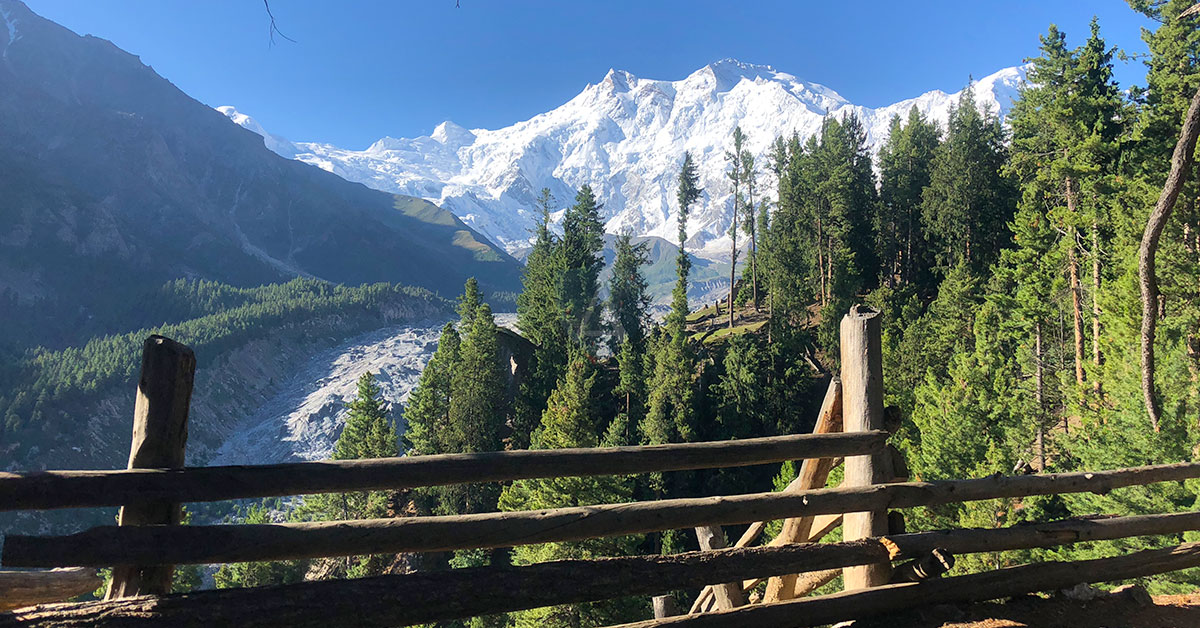
World-Class Views: From the pristine Fairy Meadows to the towering Rupal Face—the world’s tallest mountain face—Nanga Parbat offers some of the most breathtaking landscapes on the planet.
Off-the-Beaten-Path: Unlike the crowded Everest or K2 base camps, Nanga Parbat is remote and relatively less visited, offering a peaceful and authentic trekking experience.
Wildlife and Nature: The region is rich in diverse flora and fauna. From snow leopards to unique plant species, the Nanga Parbat trek is a journey through untamed nature.
Why Choose “An Altitude” for Your Nanga Parbat Adventure?
An Altitude is not just a trekking company; it’s a team of experienced adventurers who know the Nanga Parbat region intimately. We prioritize safety, personalized itineraries, and sustainable trekking practices, ensuring that your experience is memorable and respectful to nature.

The Best Time to Trek to Nanga Parbat
Timing is critical for any high-altitude trek. Weather conditions in the Nanga Parbat region can be unpredictable, so choosing the right season is crucial to ensure a safe and enjoyable journey.
Optimal Seasons:
- Summer (June to August): This is the most popular time to trek to Nanga Parbat. The weather is warmer, and the snow has melted from lower altitudes, making the trek easier to navigate. Expect lush green meadows and clear mountain views.
- Spring (April to May): During these months, the landscape comes alive with blooming flowers, and wildlife is more active. It’s also less crowded compared to the peak summer season.
- Autumn (September to October): While the weather cools down, autumn offers clear skies and vibrant fall colors, making it a beautiful but slightly colder time to trek.
Trekking Routes to Nanga Parbat: Which One is Right for You?
There are various trekking routes to explore Nanga Parbat, each offering a different perspective of this massive peak. Whether you’re looking for a leisurely trek to Fairy Meadows or want to conquer the Rupal Face, there’s a route for every level of adventurer.
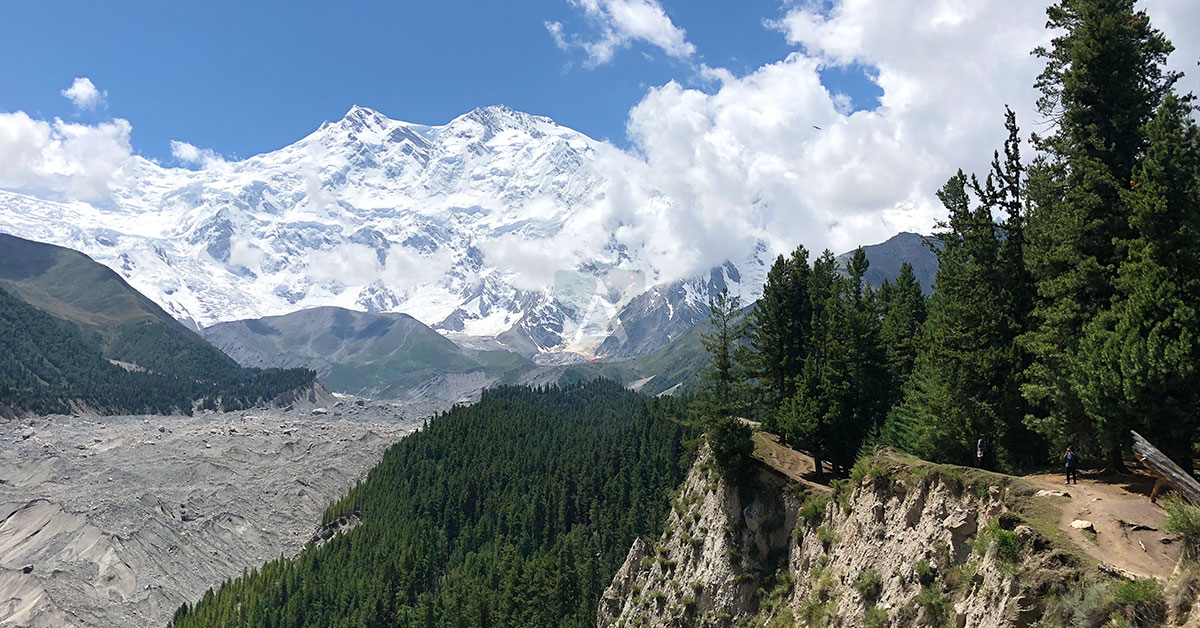
Fairy Meadows and Beyal Camp Trek
- Difficulty: Easy to Moderate
- Duration: 4-5 days
- Best for: Beginners and nature lovers
This route is perfect for those who want to experience the magic of Nanga Parbat without tackling its more challenging sides. The trek takes you through lush forests, serene meadows, and up to the base camp where you can marvel at the north face of Nanga Parbat.
Highlights:
- Camping at Fairy Meadows, a beautiful high-altitude meadow that offers breathtaking views of the mountain.
- Day hikes to Beyal Camp for closer views of the north face.
Rupal Face Trek
- Difficulty: Moderate to Challenging
- Duration: 6-8 days
- Best for: Intermediate trekkers
The Rupal Face route is ideal for adventurers looking for a challenge. Known as the tallest mountain face in the world, this trek leads you to the base camp of Nanga Parbat’s southern side.
Highlights:
- Trekking through the Rupal Valley, renowned for its remote beauty and towering cliffs.
- Unmatched views of the Rupal Face, the highest sheer wall on Earth.
Diamir Face Trek
- Difficulty: Challenging
- Duration: 8-10 days
- Best for: Experienced trekkers
The Diamir Face trek is for seasoned adventurers ready to take on a more demanding route. It takes you to the western face of Nanga Parbat, where climbers often begin their summit attempts.
Highlights:
- Rugged landscapes, including glacial paths and steep mountain terrain.
- Stunning vistas of Nanga Parbat from its less-visited western side.
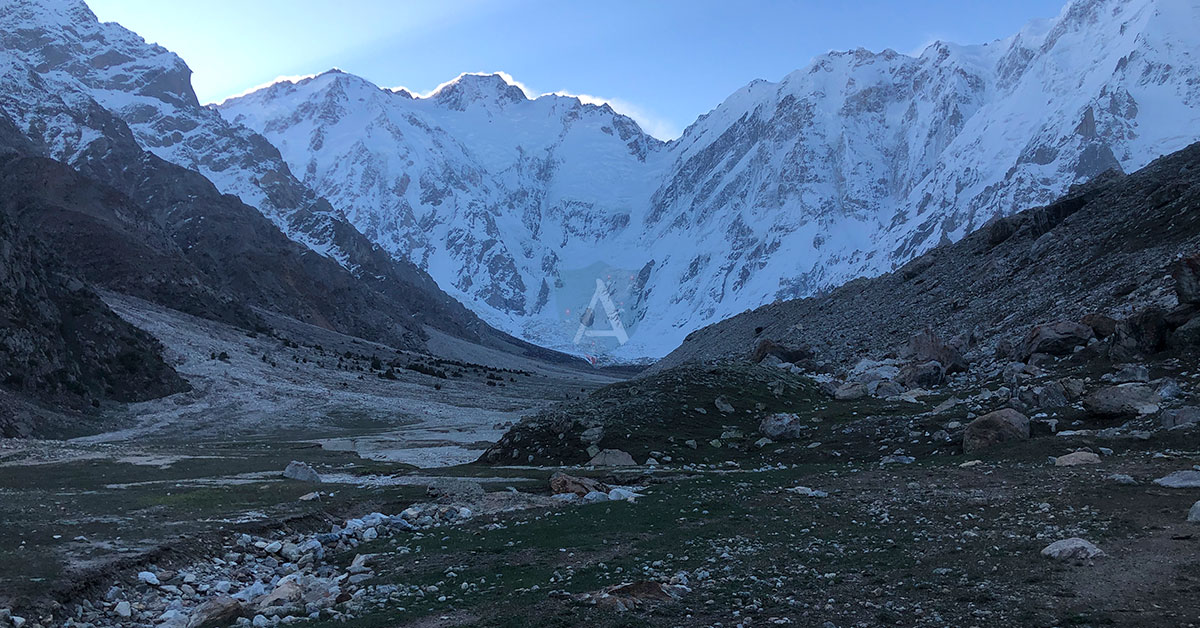
What to Expect: Terrain, Wildlife, and Culture
Challenging Terrain
- Nanga Parbat treks are not just a walk in the park. Expect a variety of terrains, including rocky paths, high-altitude meadows, dense forests, and river crossings. Be prepared for gradual altitude gain and steep ascents, especially on the Rupal and Diamir treks.
Wildlife Encounters
- The region is home to fascinating wildlife, including Himalayan ibex, snow leopards, marmots, and eagles. Trekkers often spot these animals in their natural habitat while exploring the lower valleys.
Cultural Immersion
- The villages around Nanga Parbat offer a chance to engage with the local communities. Experience the traditional Gilgiti hospitality, taste regional foods, and learn about the unique lifestyle of people living in the shadow of one of the world’s tallest peaks.
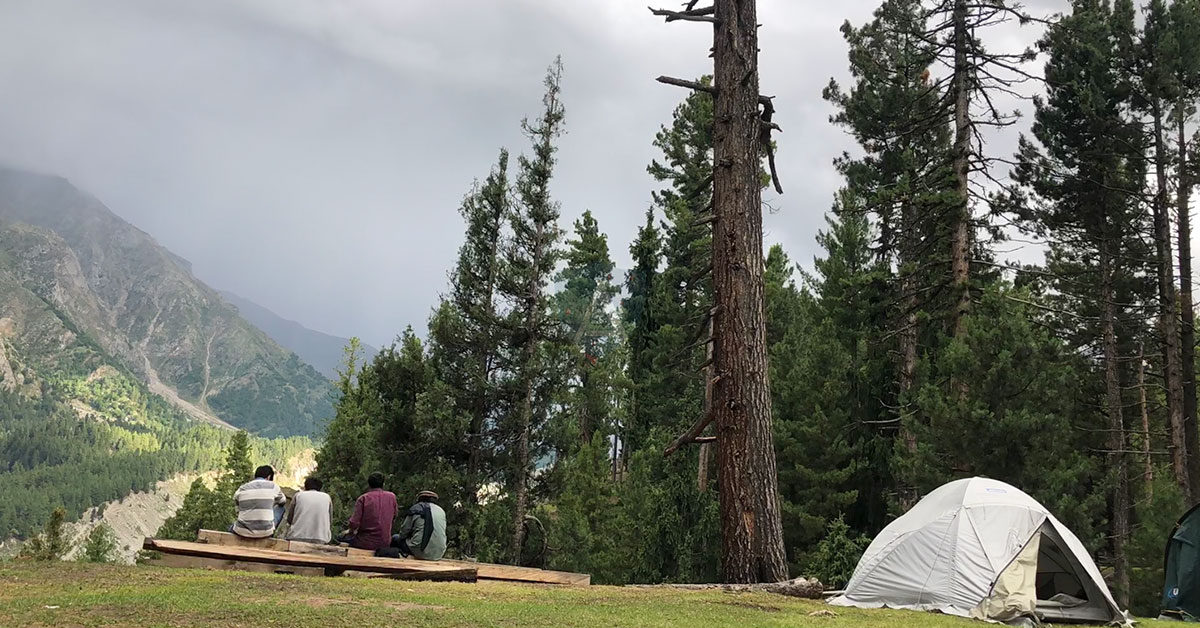
How to Prepare for the Nanga Parbat Trek
Preparation is key to ensuring a successful and enjoyable trek to Nanga Parbat. Here’s what you need to consider:
Physical Fitness
To trek at high altitudes, you must be in good physical condition. Regular cardio, strength training, and hiking practice are recommended at least three months before your trek.
- Focus on Endurance: Long-distance walks or hikes.
- Train for Altitude: If possible, hike at high altitudes or use elevation masks for preparation.
Packing Essentials
Packing light but smart is essential. Here’s a quick list of what you’ll need:
- Clothing: Layered clothing for variable weather conditions, including thermal wear, waterproof jackets, and trekking pants.
- Footwear: Sturdy, comfortable, and waterproof trekking boots.
- Accessories: Trekking poles, sun protection (hat, sunscreen, sunglasses), and a hydration system.
Acclimatization
To avoid altitude sickness, trekkers should plan their ascent gradually, allowing for acclimatization days. At An Altitude, our itineraries are designed to help you adjust to the high altitudes safely.
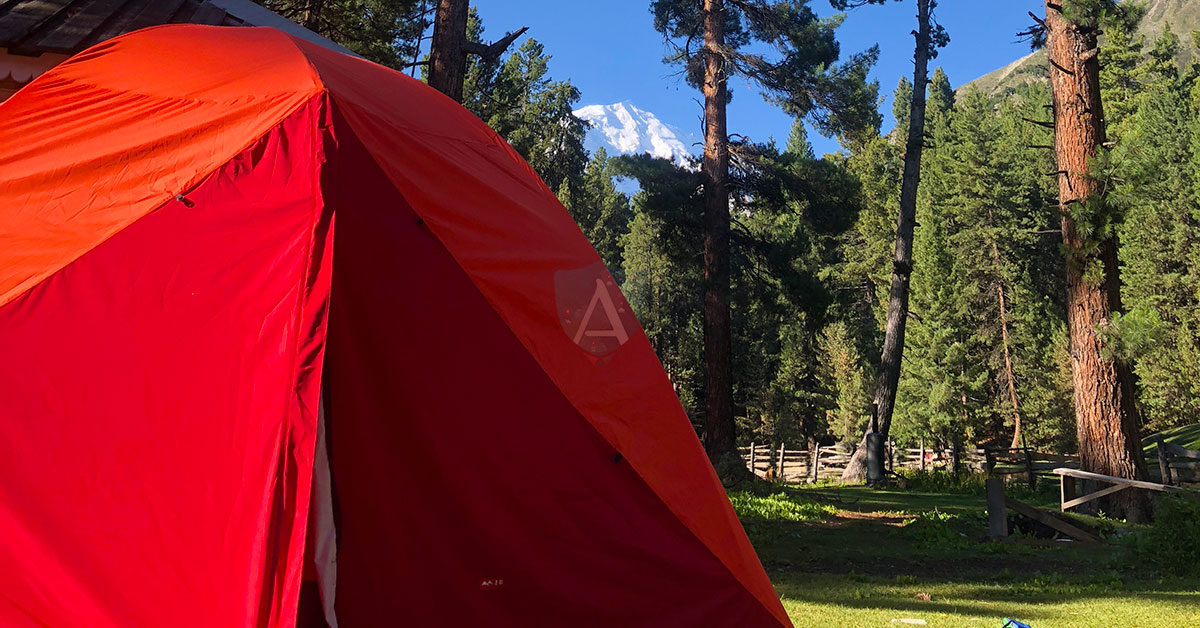
Safety and Support: Why Trekking with “An Altitude” Ensures a Worry-Free Journey
At An Altitude, we take your safety seriously. Our experienced guides are not only familiar with the region but are also trained in first aid and emergency procedures.
Experienced Guides
Our guides have years of experience leading treks to Nanga Parbat. They are experts in navigating the terrain and are equipped to handle emergencies.
Emergency Planning
We carry necessary emergency gear, including oxygen cylinders and satellite phones, to ensure that help is always available if needed.
Permits and Logistics
Trekking in Nanga Parbat requires certain permits, which An Altitude takes care of for you. We handle all logistics, from securing permits to arranging transportation, so you can focus on enjoying your adventure.
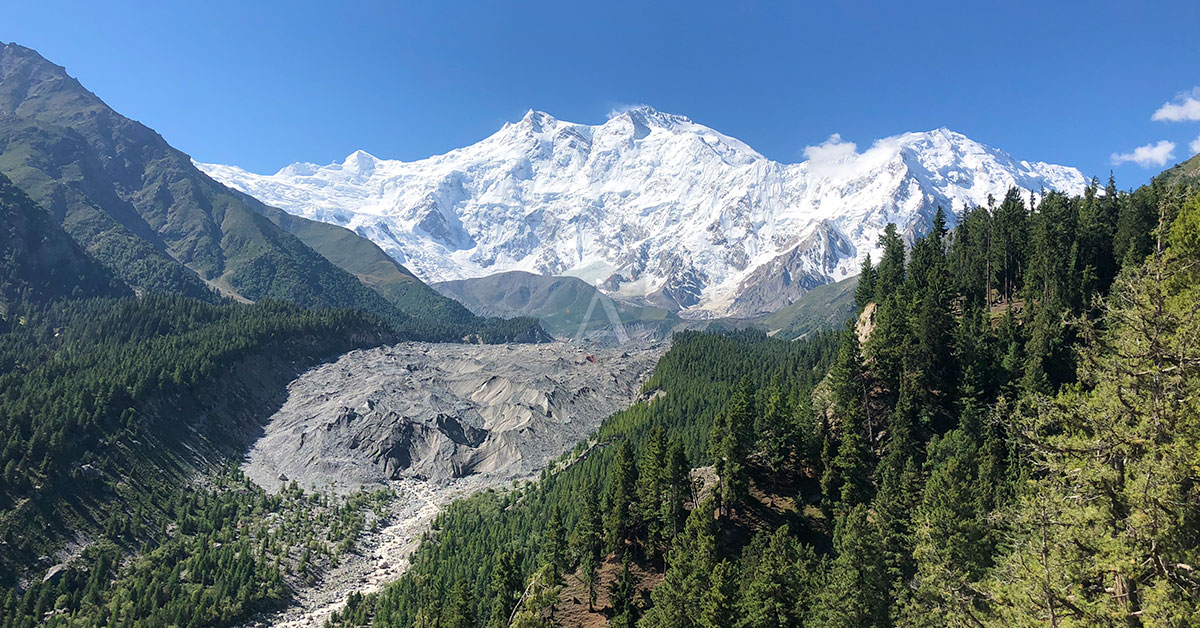
FAQs About Trekking to Nanga Parbat
Do I need trekking experience to visit Nanga Parbat?
While beginners can enjoy the Fairy Meadows trek, we recommend some prior trekking experience for more challenging routes like the Rupal and Diamir Faces.
How do I prevent altitude sickness?
Acclimatization is key. At An Altitude, we plan extra days for acclimatization, encourage hydration, and maintain a slow, steady pace.
What kind of food can I expect on the trek?
Our trekking packages include locally sourced, nutritious meals to keep you energized. Expect simple but hearty meals, with options for vegetarians as well.
Book Your Nanga Parbat Trek with “An Altitude”
Ready for the adventure of a lifetime? Whether you’re looking to experience the serene beauty of Fairy Meadows or tackle the challenge of Nanga Parbat’s towering faces, An Altitude is your trusted partner for safe, thrilling, and unforgettable trekking experiences.
Contact us today to start planning your trek and explore the wild beauty of Nanga Parbat with An Altitude.

